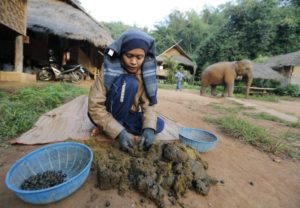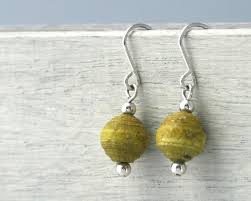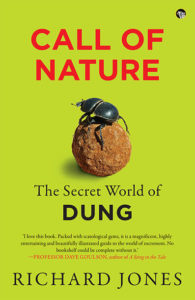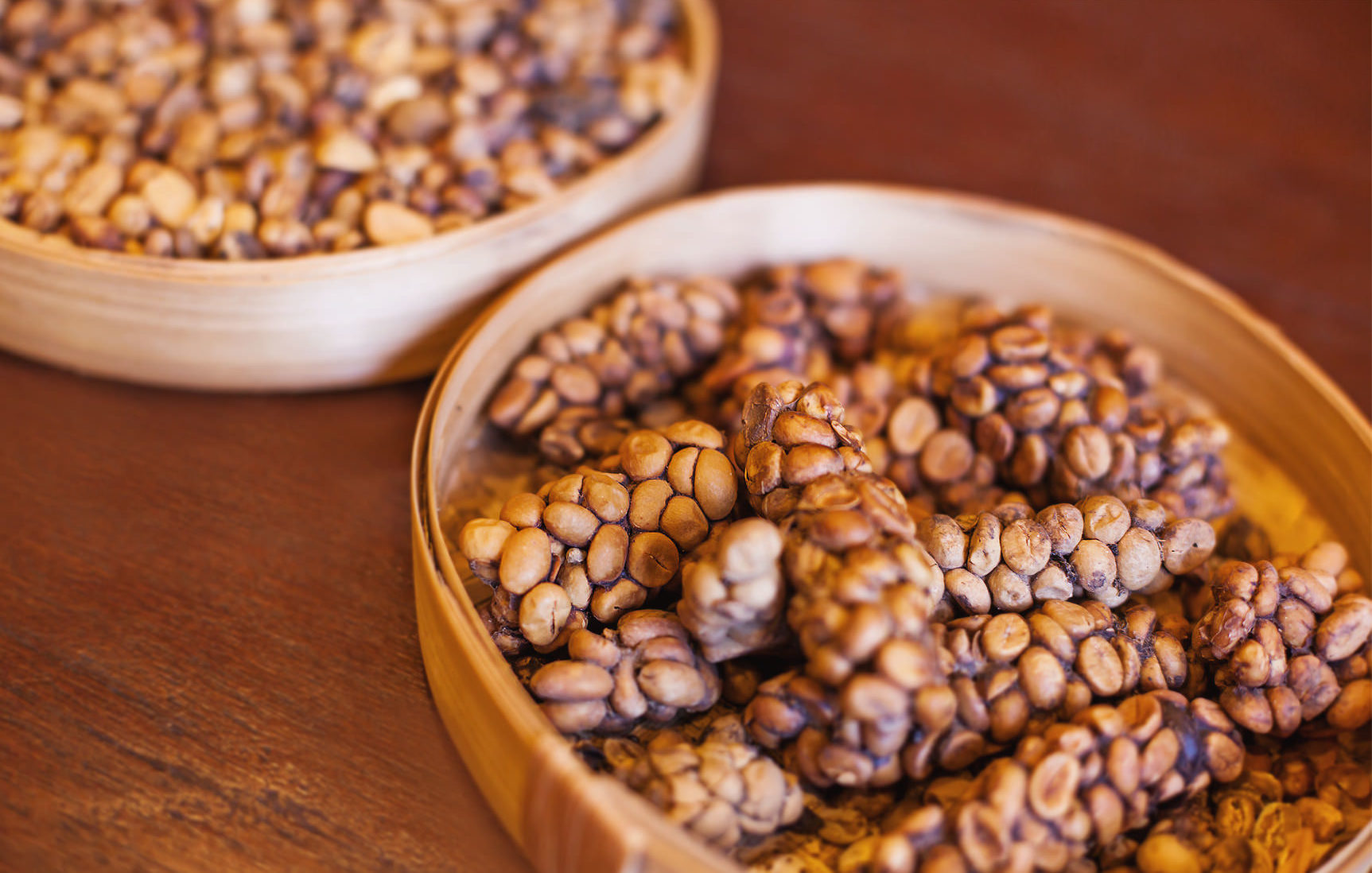According to tradition, Kumalak, a mystical divination system from Central Asia, relies on a shaman interpreting the patterns exposed when rearranging 41 sheep droppings on a grid of squares. Beans or stones can also be used, but since kumalak actually means ‘sheep dung’ in Turkic, I’d feel rather short-changed if it were me having my future read by a proponent using these modern hygienic alternatives.
Dung, as any macerated and mashed plant fibre, can be readily made into paper. Again, once it is dry it loses any faecal scent, but harvesting sufficient quantities has so far kept this a relatively obscure artisan product. Elephant dung is amongst the most inoffensive of droppings, being little more than pre-chewed plant material, passed in large quantity through a digestive tract that works by removing only small amounts of nutrient, but from a vast throughput. Such was the success of elephant dung paper, that similar products are now created from the dung of cows, horses, moose, donkeys and giant pandas.

On the other hand using elephant dung as a textural splatter in paintings, and for the bulky base of designer platform shoes, is simply relying on novelty to gain popular attention. Likewise moose and deer droppings, dried and varnished and made into drop earrings, also rely on a headline-catching you-cannot-be-serious factor.
The latest use of the elephant gastrointestinal tract is to partly digest coffee beans, which can then be extracted from the droppings and used, either to make drinkable coffee (under the brand name black ivory), or to be brewed into elephant dung coffee beer. There is still a bit of the gimmicky sensationalist venture here, but these are genuine and apparently successful enterprises, used to bring in hard cash and garner international awareness in the struggle that is 21st-century elephant conservation. This is still a cottage industry, but it echoes a similar small-scale operation that is now worth tens of millions of dollars. Black ivory takes its inspiration directly from the natural proclivity of the luwak (the Asian palm civet, Paradoxurus hermaphroditus), a small, mostly arboreal cat-like mammal, to eat coffee fruit in its native range across southern and southeast Asia.

The usual history story goes that when the Dutch planters introduced coffee-growing into Sumatra and Java, in the 18th and 19th centuries, they forbade native workers from collecting the fruit from the trees for their own use, such was the high value of the crop. Instead, the local workers collected civet droppings, through which the beans passed almost untouched, cleaned them, roasted and ground them, and made a coffee with an improved aromatic tang and subtle non-bitter taste. It’s the protein content of normal coffee beans which gives the drink its bitterness, and although the nut-hard bean looks unaffected during its pass through the luwak digestive tract, the claim is that these bitter proteins are significantly altered by the enzymes in the animal’s gut, producing a unique smooth mellow flavour. The fame of the kopi luwak (civet coffee) spread and it soon became a marketable commodity in its own right, selling today for something like £500 ($700) per kilogram; forest-collected wild civet-eaten beans are the highest prized, and achieve the best prices. Civet farming now occurs widely in the region, but disreputably poor animal housing conditions, force-feeding horror stories and fraudulent claims of dubious coffee provenance plague the industry.
In yet another variant, caterpillar teas are available in China – brewed from the frass of caterpillars fed on various plants. This is ‘tea’ in the broader medicinal sense of a hot infusion of crushed leaves (or in this case partly digested leaves) taken against complaints of the spleen and stomach, to aid digestion, or to ease summer heat, rather than in the popular milk-and-sugar cuppa beverage more typically drunk in the UK. However, some enterprising wag has taken to offering tea-bags of the stuff for the export market. Unfortunately I just missed a recent tasting in the entomology department of London’s Natural History Museum, where the general consensus was that it tasted a bit like tea.
I am pretty skeptical about the claims of William Salmon, whose book The Compleat English Physician of 1693 gives details of sheep dung tea used to treat smallpox, jaundice and whooping cough. At the time, this extraordinary pharmacopoeia of drugs and concoctions was widely ridiculed for its quackery. However, in a recent Dictionary of Prince Edward Island English (Pratt 1988) sheep dung tea is genuinely reported as a folk remedy given to sick people, along with the supporting claim that this is not a euphemism. I would happily taste kopi luwak, but even I baulk at the idea of sheep dung infusions. The various adulteration of tea and coffee acts (1724, 1730 and 1776) are widely claimed to have been needed because of assertions that ground-up sheep dung was being added to what was then an expensive high-end commodity.
Many would argue that civet coffee, black ivory and caterpillar tea are just riding on the back of their novelty gimmick value; taste tests are notoriously subjective, and people will try anything new, reassuringly expensive and claimed to be exclusive. Similar claims can be levelled against the idea of facial beauty treatments made from nightingale droppings (developed in Japan) and chicken dung (Hippocrates suggested pigeon) used to treat baldness. All rely on the unreliable feedback of desperate, often gullible customers.
Lion dung is marketed for its supposed ability to prevent deer, rabbits, cats or other unwanted animals from coming onto private property. Intuitively this may seem plausible: the rationale is that these annoying pest animals instinctively recognise the smell of a dangerous predator and stay away. The trouble is that lions are not native through most of the Western world, so no instinctive recognition of their smell could have evolved in the local fauna. According to the website of the British Deer Society, lion dung is very smelly (as is that of most carnivores), but ineffective. To my mind, human excrement would seem a more logical choice to deter undesirables in the garden. It also has the added benefit of attracting interesting dung beetles. Try it.

Excerpted with permission from Call Of Nature: The Secret World Of Dung, Speaking Tiger, Rs 499
(Cover image of civet coffee: insights.looloo.com)


Comments are closed.